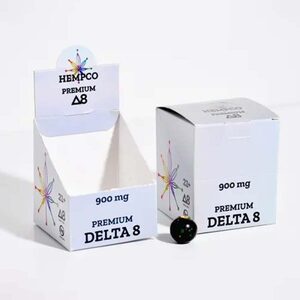Body
From humble beginnings to sophisticated marketing tools, product display boxes have undergone a fascinating transformation throughout retail history. Once seen as a simple way to package goods, they have evolved into strategic marketing elements that influence customer behavior and drive sales. Let's delve into this captivating journey, exploring the key stages of product display box evolution.
From Protection to Presentation: The Early Days of Display Boxes (Late 19th - Early 20th Century)
The origins of product display boxes can be traced back to the late 19th century. Early iterations were primarily focused on practicality, serving the basic function of protecting products during transport and storage. However, retailers soon recognized the potential of these boxes for presenting merchandise in a more organized and visually appealing way.
The Rise of Cardboard and the Birth of Point-of-Purchase Displays (POP Displays)
The invention of corrugated cardboard in the mid-1800s provided a lightweight and affordable alternative to wooden crates. This innovation paved the way for the widespread use of cardboard boxes in retail, including display boxes. By the early 20th century, retailers began experimenting with Point-of-Purchase (POP) displays. These strategically placed displays, often featuring product display boxes, aimed to capture customer attention at the crucial moment of purchase decision.
The Mid-20th Century: A Shift Towards Branding and Marketing
The mid-20th century witnessed a significant shift in the purpose of product display boxes. With the rise of mass production and growing consumerism, brands recognized the need to differentiate themselves in a crowded marketplace. Display boxes became a canvas for branding and marketing messages. Manufacturers started incorporating logos, brand colors, and product information onto the boxes. This era also saw the introduction of more eye-catching designs and graphics, further enhancing the visual appeal of display boxes.
Material Advancements and the Rise of Self-Service Retail
The latter half of the 20th century saw advancements in materials and printing technology. This allowed for the production of display boxes with vibrant colors, high-quality images, and more durable materials like plastic alongside cardboard. The rise of self-service retail models further accentuated the importance of product display boxes. With less opportunity for direct interaction with sales staff, brands relied heavily on the visual communication power of display boxes to attract customers and explain product benefits.
The Modern Era: Customization, Sustainability, and Interactive Experiences
Today, product display boxes continue to evolve, reflecting changing consumer habits and technological advancements. Here are some key trends shaping the modern era of display boxes:
Customization for Brand Storytelling:
Modern display boxes are often custom-designed to reflect a brand's unique identity and story. They can incorporate intricate designs, unique shapes, and high-quality printing to create a memorable first impression. This level of customization allows brands to connect with customers on an emotional level, fostering brand loyalty and encouraging repeat purchases.
Sustainability in the Spotlight:
Environmental consciousness is a growing concern for both consumers and brands. Today, many display boxes are made from recycled materials or eco-friendly alternatives like bamboo. This focus on sustainability resonates with environmentally conscious consumers and aligns with brand values that prioritize environmental responsibility.
Interactive Displays and the Rise of Technology:
Technology is increasingly playing a role in product display boxes. Some boxes incorporate QR codes that link to product information or interactive features that allow customers to engage with the product virtually. These interactive elements can provide a richer customer experience and further entice customers to learn more about the product.
The Future of Product Display Boxes: A Blend of Innovation and Tradition
The future of product display boxes promises continued innovation and a blend of the traditional and the cutting-edge. We can expect to see even more sophisticated designs, interactive elements, and a focus on sustainable materials. Display boxes will likely become even more data-driven, with manufacturers leveraging customer insights to personalize messaging and optimize their effectiveness. One thing remains certain: product display boxes will continue to play a vital role in influencing customer behavior and driving sales in the ever-evolving retail landscape.











Comments